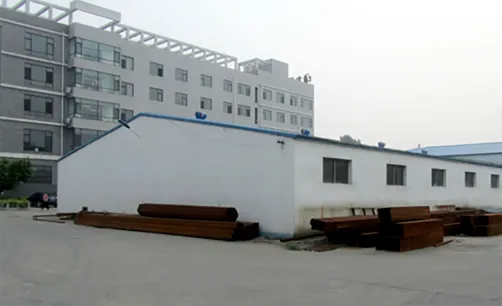nov . 27, 2024 11:10 Back to list
Exploring the Uses and Impacts of Barbed Wire Fences in Modern Landscapes
Barbed Wire Fences A Multifaceted Utility and Symbolism
Barbed wire fences have played a significant role in shaping both physical landscapes and societal narratives throughout history. Initially developed in the late 19th century, barbed wire emerged as a revolutionary fencing solution that addressed the challenges of marking boundaries and containing livestock across vast expanses of land. Its design, characterized by sharp barbs placed at intervals along a wire strand, not only served to keep animals contained but also deterred intruders, making it an essential tool for farmers and ranchers.
The advent of barbed wire began in the 1860s, after which it gained rapid acceptance among cattle ranchers and farmers faced with the vast open territories of the American Midwest. The innovative designs from figures like Joseph Glidden ensured that barbed wire became an effective and economical means to enclose property. Prior to this, traditional fencing methods—often made from wood or stone—were labor-intensive and costly. Barbed wire offered a lightweight and durable alternative, revolutionizing agricultural practices and facilitating the expansion of agriculture into previously inaccessible areas.
However, the utility of barbed wire extended beyond agriculture. It became a symbol of societal control and division. In the context of the American West, barbed wire fences signified the end of the open range and the beginning of private land ownership, which played a crucial role in the westward expansion and the conflicts that arose between settlers, indigenous populations, and cattle ranchers. The notion of “fencing in” land transformed the landscape into an indication of wealth and power, often exacerbating tensions in the region.
barbed wire fences

Barbed wire fences have also been deployed in more somber contexts throughout history. During World War I and World War II, barbed wire was extensively used in military fortifications, becoming indicative of battlegrounds and conflict zones. It was employed not only to secure military installations but also to imprison and isolate groups deemed undesirable by regimes. Concentration camps, internment camps, and prisons have historically used barbed wire as a means to maintain control and instill fear, transforming it from a tool of agricultural productivity into one of repression and confinement.
The symbolism of barbed wire persists today. In various forms of art and literature, it represents both protection and restriction. Artists often use barbed wire to symbolize barriers—whether emotional, psychological, or physical—that individuals face in society. It serves as a poignant reminder of the divisions that exist in our world, echoing themes of entrapment and exclusion.
Moreover, in contemporary discussions about immigration and borders, barbed wire has resurfaced as a potent image. Countries erect barbed wire fences along borders to manage migration, control movement, and assert territorial sovereignty. This has sparked debates over human rights, national security, and the ethics of using such deterrents. As refugees seek asylum and migrants search for better opportunities, barbed wire fences symbolize not just physical boundaries but also the broader societal conflicts surrounding immigration policies.
In summary, barbed wire fences embody a complex interplay of utility and symbolism. While they revolutionized agricultural practices by providing an efficient means of enclosure, they also represent historical and contemporary issues of division, control, and conflict. As society navigates the challenges of land ownership, borders, and human rights, barbed wire continues to evoke strong emotions and provoke critical discussions about the nature of boundaries—both literal and metaphorical. Whether seen on farms, military fronts, or the borderlands of nations, barbed wire stands as a reminder of humanity's ongoing struggle with the concepts of belonging, restriction, and freedom.
-
The Role of Field Wire Fence in Grassland Conservation
NewsJul.15,2025
-
Stainless Steel Razor Wire Durability in Coastal Environments
NewsJul.15,2025
-
Enhancing Home Security with Mesh Fences
NewsJul.15,2025
-
Diamond Mesh Wire for Small Animal Enclosures
NewsJul.15,2025
-
Common Wire Nail Tensile Strength Testing for Woodworking
NewsJul.15,2025
-
Barbed Wire Corrosion Resistance Galvanization Techniques
NewsJul.15,2025









